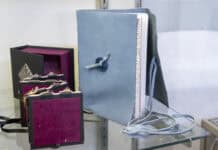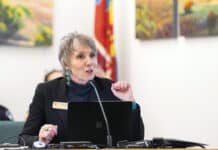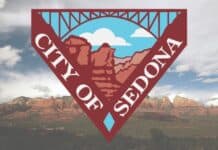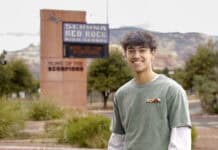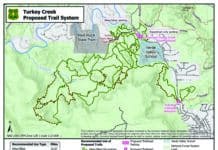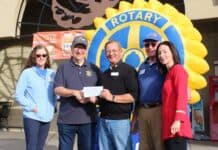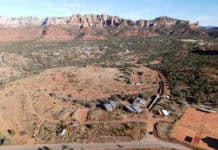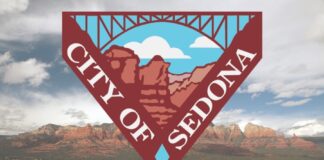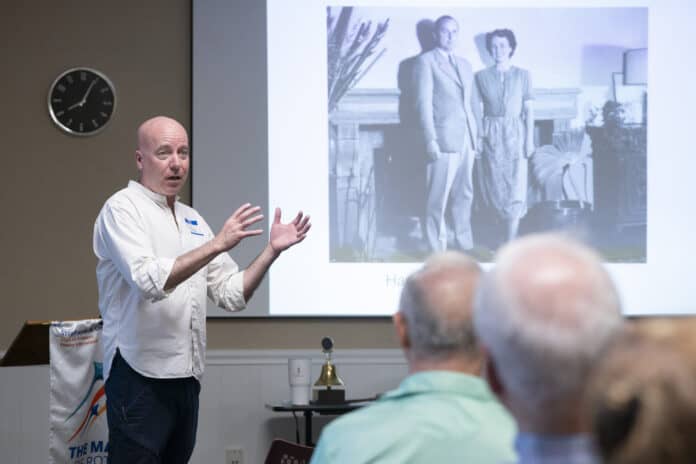
Verde Valley School head Ben Lee gave a presentation on the history of the school to the Rotary Club of Sedona Village on Thursday, Sept. 5.
The school was founded in 1946 by Hamilton and Barbara Warren.
“Not a day goes by that you don’t hear people mention Ham and Babs, because their fingerprints are everywhere on our campus,” Lee said. “We have pictures of them, we have a bust of Ham in Brady Hall. Especially at the beginning of the year, as we’re trying to set the tone for the students, we will speak about the traditions of the school and their founding vision, because it forms the basis of what we’re doing.”
Hamilton Warren was born to the prominent Fiske Warren family, known for their Boston paper manufacturing business. He would go on to graduate from Harvard in 1926 with a degree in anthropology and later from the Harvard Business School.
“He opened Verde Valley after World War II and designed its curriculum to promote international and intercultural understanding by requiring its 120 students to take courses in anthropology and Spanish and annual field trips to Mexico and nearby Indian reservations,” Warren’s New York Times obituary stated.
“Ham grew up in between Boston, where his family was, and here, because as a young child he’d been diagnosed with asthma,” Lee said. “At one point, [Ham] and a group of his fellow students and teachers took a long horseback camping journey from Phoenix to Flagstaff … Along the way, they passed through this area, and this is when Ham first discovered the magic of this place, and obviously stuck with him.”
Barbara Warren, the daughter of British coffee plantation owners, grew up in Guatemala, where she was born in 1916.
“After [World War II] was over, Ham took a vacation to Guatemala, where Babs was working in the hotel as the receptionist in which Ham was staying,” Lee said. “Legend has it they locked eyes, and he was completely smitten. As a way to make small talk, he complimented the vase of gorgeous Guatemalan flowers on the desk and Babs took note, and by the time Ham had gone up to his room, she had caused a very large vase of those same flowers to be put in his room. He asked her to dinner; the rest is history.”
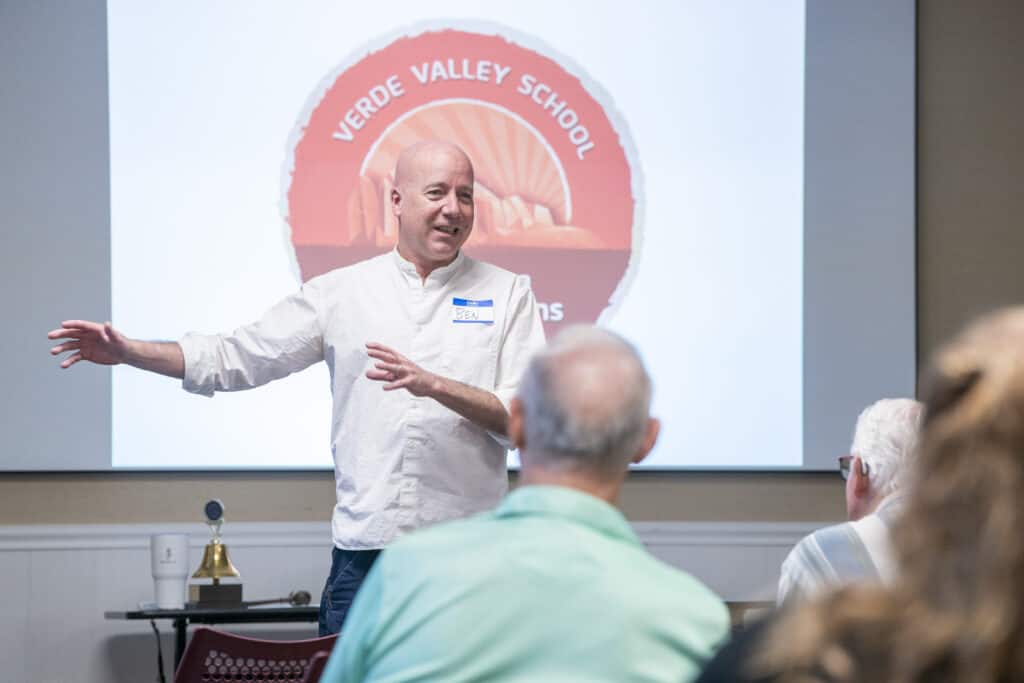
Lee said that for the Warrens, the Holocaust and the human cost of World War II were motivations to create a small-scale representation of the world where people could show that coexistence is possible.
“Mindful of the global horrors of World War II and the ravages of ethnocentrism and racism in this country, the Warrens believed that America — indeed the world — needed a school where the values of cultural diversity would be understood and celebrated, not simply studied and tolerated,” the school states on its website.
“For two years, while they built the initial buildings on campus they lived in a surplus army tent with their 4- and 5-year old daughters,” Lee said. “They got their water from Oak Creek and lived together with all of the stonemasons and the other people who were building our campus. They had five children total, and three of them, Kevin, Chris and Darren, have actually spent a lot of time as teachers or deans of students or equestrian instructors on our campus. Leslie, the oldest daughter, still lives on our campus in the house that Ham and Babs built.”
Babs was the person most responsible for designing the campus, while Ham oversaw the construction.
“It took the Warrens close to a year to get the nucleus of the school’s buildings erected,” Arizona Highways wrote in August 1954. ”In the early phases Warren hired Indian labor under the foremanship of an experienced construction man to do the work. It was an effort to carry the intercultural ideal even into this part of the school. More lately the buildings have been erected by a qualified construction crew on the school’s payroll with occasional help from the students.”
“There were challenging academics. I think they got even more challenging with the International Baccalaureate program, and why our youngest daughter went there for four years,” said Rotary member Jennette Bill, who attended VVS from 1969 to 1970. “We did work jobs then on campus. These things have been from the start of the school that the kids took care of the campus.” Bill discussed how a VVS field trip to Erongaricuaro, Michoacán, Mexico, taught her the value of physical labor.
“I lived with a family that made pots out in their backyard with wood-fired kilns, and it was an amazing experience,” Bill said. “Every person on our campus, every student and adult, has what we call a work job,” Lee said. “Which is twice a week for 90 minutes, [if] we’ve got something that needs to be done, they’ll do it. So it might be shoveling the manure of our 24 horses, or, in the early days, building a building, because the stables in which our 24 horses sleep were built with student labor.”
The school has also expanded its international reach, welcoming students from 18 different countries this year, including, for the first time, a student from Zimbabwe. The student’s respective national flags are on display at the school entrance.
“We also have a longstanding program to bring coats and blankets up to Second and Third Mesa for Hopi kids. It’s cold, windy up there, and so we try to help out,” Lee said. “We also, this year, for the first time in five years, will be reviving our service trip to Malawi this summer. We have a group of kids and faculty who go after school for four weeks to Malawi to serve in various ways, helping with eyeglass distribution. That’s together with the Lions Club.”
Lee is a member of the Sedona Sister Cities Education Committee and has been investigating educational opportunities with one of Sedona’s potential sister cities, Canmore, Alberta, Canada, as well as working with several staff from West Sedona School to create the committee’s charter.
“VVS hasn’t yet identified a project that we want to do with Canmore, but we’re working on it and hoping for some kind of in-person exchange such as we go visit them or they come visit us, preceded and probably followed by some online interactions,” Lee said. “But it’s still in the works.”
“Verde Valley School is this microcosm of what a world could and should be like, people of all different nationalities and mindsets coming together,” Bill said. “It doesn’t mean there aren’t problems, but you work them out and you’re friends with so many people that are so different from you. It’s wonderful.


